Caio Duilio was the lead ship of a class of ironclad turret ships, built for the Italian Regia Marina in the 1870s, named after Roman Admiral Gaius Duilius. Duilio was started in January 1873, launched in May 1876, and completed in January 1880. She led a class also comprising Dandolo, both replacing the sail and old Principe Amedeo-class ironclads (1865). The Duilio class was designed by famous naval engineer Benedetto Brin, and became the first Italian steam-only turret ironclads, but also, crucially, wit four gigantic 450 mm (17.7 in) rifled muzzle-loading guns, the largest, fastest and most powerful ships of their day. They were the dreadnoughts of 1882. Strategically, they fitted into Italy’s large naval expansion program pitted against Austria, compounded by new possibilities offered by the opening of the Suez Canal in 1869.
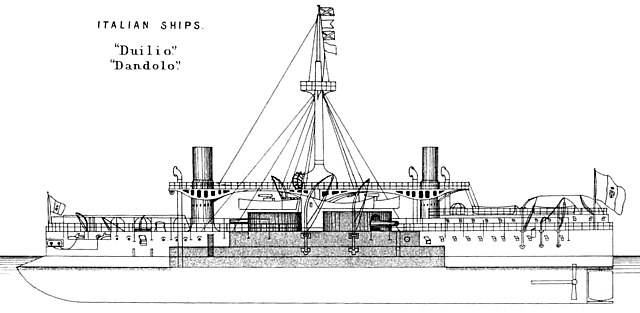
Blueprint of the Duilio, showing the short and concentrated “all or nothing” armour scheme.
Development
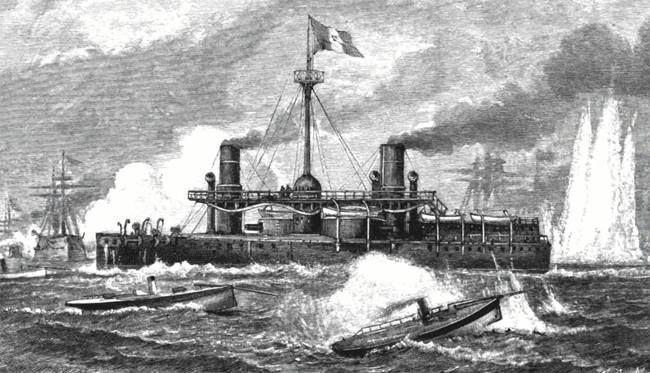
Caio Duilio illustration on The_British Navy Vol.I 1882, imaginatively showing two spare torpedo vessels.
In the early 1870s, lessons from the Battle of Lissa were now well digested, and the Italian Admiralty launched a large naval expansion program, initially aimed at countering the Austro-Hungarian Navy. But with the opening of Suez Canal in 1869 this opened new strategic doors for the Peninsula. Italy would need however a powerful fleet to assert its domeinance while protecting its growing merchant marine. The program started with the biggest “stick” possible for an Navy, a superlative ironclad.
This was the Duilio class, designed by the naval architect Benedetto Brin. Originally iit was to be armed with an Armstrong 35 t (34-long-ton; 39-short-ton) muzzle-loading gun. But due to a lengthy construction time (many factors went into play in this) Armstrng came back with a proposal, to accommodate the largest gun they ever produced, finding the Royal Navy not interested initially. This was a behemoth, a 60 t (59-long-ton; 66-short-ton) gun. But soon they also confidently proposed, still on paper at that stage, a symbolic 100-long-ton (102 t) 450 mm (17.5 inches) gun. The weight of these guns posed a whole new series of challenged for Brin, but he managed.
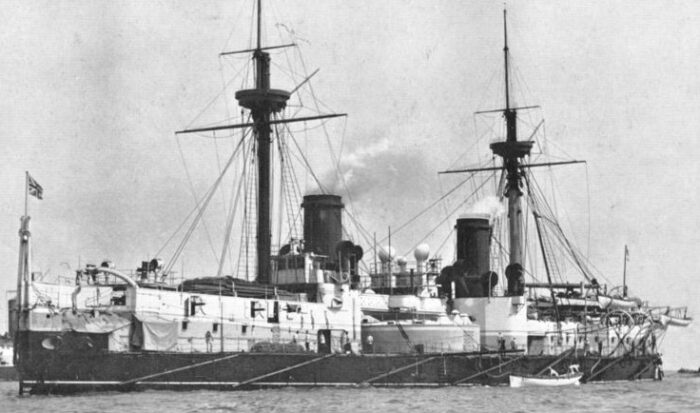
One influence: HMS Inflexible
Brin originally wanted to build three ships, but with rising costs, it was clear the Navy needed to settle for two. The construction duration was partly due to scores of modifications even after the final plans were accepted and limited and Italy’s insufficient industrial capacity to build them with domestic materials. The iron used resuired a new standard Italian Fundries were not accustomed to, the machinery, at least at such size, could not ben engineered and produced locally, and especialy such heavy guns. The latter had to be imported.
The Duilio class was a fantastic innovation compared to what came before: The last Italian ironclads at that stage were the Principe Amedeo class ironclads. They were fully-masted, central battery ships started in 1865 and completed in 1874-75, so in about ten years, and completely obsolete by then. They were entirely built in Italy, designed by Eng. De Luca, but still integrated wood in their hulls, as they were composite ships, an were capable of 12 knots. The Duilio in comparison was space age technology. The design was so radical it formed the basis for the following two ironclad designs, Italia and Ruggiero di Lauria class, the latter designed by Giuseppe Micheli. All six formed the core of the 1890 Regia Marina.
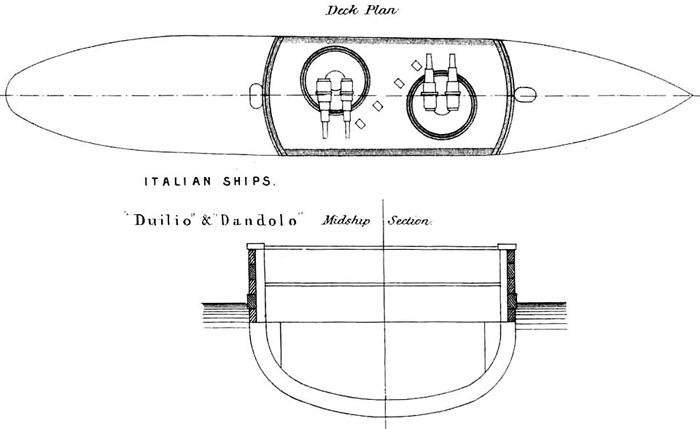
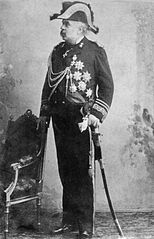 The centerpiece of this Ironclad class was a main battery of four 17.7-inch (450 mm) guns, by then, the largest ever put on a ship afloat worldwide. The following classes Italia class, (Same designer, Benedetto Brin) were laid down in 1876, and the Ruggiero di Lauria class, (designed by Giuseppe Micheli), in 1880, all kept a powerful, unmatched heavy artillery. Originally the design was intended to carry Armstrong 35 t muzzle-loading guns. However the plans were modified several times during the lengthy construction, and eventually the largest guns that Armstrong produced, next to 60 t (59 long tons; 66 short tons) has been envisioned, but the choice fall ultimately on to the 100-long-ton (102 t) 450 mm gun proposed by the firm.
The centerpiece of this Ironclad class was a main battery of four 17.7-inch (450 mm) guns, by then, the largest ever put on a ship afloat worldwide. The following classes Italia class, (Same designer, Benedetto Brin) were laid down in 1876, and the Ruggiero di Lauria class, (designed by Giuseppe Micheli), in 1880, all kept a powerful, unmatched heavy artillery. Originally the design was intended to carry Armstrong 35 t muzzle-loading guns. However the plans were modified several times during the lengthy construction, and eventually the largest guns that Armstrong produced, next to 60 t (59 long tons; 66 short tons) has been envisioned, but the choice fall ultimately on to the 100-long-ton (102 t) 450 mm gun proposed by the firm.
G. Galuppini, the Duilio class
The Duilio and the Dandolo can be considered the prototypes of the large turreted battleships. It was from them that the plans for the English Inflexible, built at the same time, were derived. The Italian Navy’s 1872 modernization program called for the construction of three large turreted battleships, without masts or sails, armed with the most powerful guns of the time and equipped with strong protection. The project was drawn up by the inspector of naval engineering Benedetto Brin.
Of the three units, two were laid down under the names Duilio and Dandolo. The third was not built. The vertical armor was limited to the central redoubt, 45 m long, containing the crew quarters. The two funnels were located at the front and rear, 430 mm. The two armored crosspieces of the turrets, respectively connected by a gangway that spanned the guns, were curved and 400 mm thick. The armor was completed by a horizontal deck corresponding to the lower limit of the wall armor, extending from bow to stern over a thickness of 70 mm.
Similarly, the upper part, or roof of the redoubt, was armored with three layers of 25 mm plates. The ship presented completely new lines. The hull, entirely made of iron, had a spur over 4 m long at the bow, the sides protruded 3 m above the water, and in the center, above the armored redoubt, were the two double turrets. At the stern was a long superstructure, narrowed in width at the center of the ship and containing the crew quarters. In the center rose a mast with a large topsail. The hull enclosed at the stern a vast well separated from the sea, capable of holding a small torpedo boat afloat, able to launch itself near the enemy to attack it with torpedoes. This installation was not implemented on the Dandolo. The main gun, supplied by the British firm Armstrong, was mounted in two twin turrets with their axes offset by 2.30 m from the ship’s plane of symmetry, the starboard turret forward of the left.
This arrangement, combined with the lack of a forward superstructure and the narrow width of the aft turrets, gave the two turrets a field of fire of nearly 270°, limited only by the space occupied by the other turret. These turrets were hydraulically operated, as was the gun loading system, which loaded from the front. Smaller caliber guns were installed on the deck, bridge, and turret roof. The torpedo tubes were underwater and fixed, one forward and one on each side. The powerplant was purchased from Perry in England, and the Duilio was the first Italian ship with twin propellers. The rapid progress made by the artillery soon made it necessary to replace the 450 mm guns with 254 mm ones and the 120 mm guns with 152 mm rapid-fire guns, which were also installed on a superstructure built forward. The Duilio was rifled in 1909, but her hull served for many more years as a floating fuel depot.
Design
Hull & General Layout
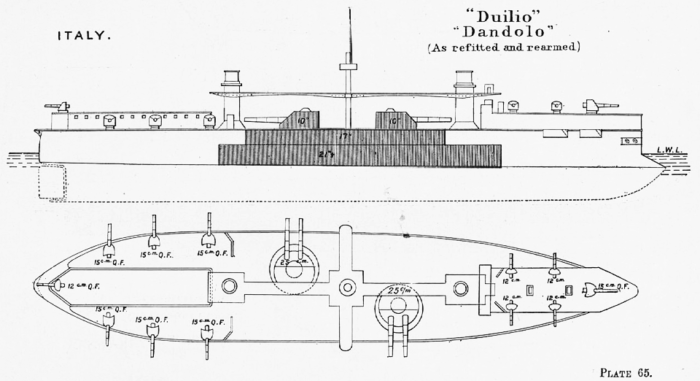
The ships Duilio class measured 103.5 meters (339 ft 7 in) between perpendiculars, 109.16 m (358 ft 2 in) long overall for a beam of 19.74 m (64 ft 9 in), making for a 1/6 ratio, while Enrico Dandolo had a slightly narrower beam at 19.65 m (64 ft 6 in) to try to improve on speed. Both had the same generous draft of 8.31 to 8.36 m (27 ft 3 in to 27 ft 5 in). Duilio displacement diverged from her sister at 10,962 long tons (11,138 t) at normal load, 12,071 long tons (12,265 t) at full load while Enrico Dandolo, despite being narrower, was slightly heavier, at 11,025 long tons (11,202 t) nprmal, 12,037 long tons (12,230 t) full load.
Both ships had a small superstructure forward, including the conning tower and a funnel, connected via a hurricane deck to a central military mast and aft superstructure, joining the second funnel. They were the first ironclads in any navy to get rid of sails from the early design phase in 1972. They had a crew of 420 officers and men (later 515). Both carried a number of smaller boats, but only Caio Duilio also had a compartment in her stern, to house a small torpedo boat of the 26.5 t Clio class (see below).
An Innovative Protection Scheme
The armour was forged by French firm Schneider-Creusot. There was a steel belt armor 21.5 in (550 mm) thick at its strongest section, protecting the ship’s magazines, and machinery spaces. Central citadel and gun turrets received had nickel steel armour. Transverse bulkheads were installed, 15.75 in (400 mm) thick. The armoured deck was 1.1 to 2 in (28 to 51 mm). Gun turrets had 17 in steel plate, but Enrico Dandolo’s new turrets (1898) had only 8.8 in (220 mm). The bow and stern were left unarmoured, but they subdivided into a cellular “raft” to keep the ship for flooding. In fact, this was a radical solution for the time, as armour only protected the ship’s engines and ammunition magazines.

This “all or nothing” configuration sparked controversy when Royal Navy Edward James Reed visited the ships under construction. The new Italian Minister of the Navy, Simone Pacoret di Saint-Bon, replied during a Parliament session that such flooding event was very unlikely, as it needed all the bulkheads of the watertight compartments being flooded.
Populsion
The propulsion system comprised two vertical compound steam engines. Each drove a single screw propeller, and was fed by eight coal-fired, rectangular boilers, in two groups, forward and aft. Each truncated into a single large funnel. Top speed was 15.04 knots (27.85 km/h; 17.31 mph) at about 5,750 kW. The fact the Duilio class were capable of a top speed of around 15 knots (28 km/h; 17 mph) was not amazing in itself, but this was slightly above average, giving them an edge in evolutions, well-helped by their massive steam-powered steering system and rudder. The Duilio class were in fact the first Italian twin-screw propelled warships. It ensured a good agility, helped by the fabourable lenght-beam ratio. New engines were installed in her 1895–98 refit, slightly more powerful, (top speed of 15.6 knots) and 8,045 ihp (5,999 kW). Range was 3,760 nautical miles (6,960 km; 4,330 mi) at 10 knots (19 km/h; 12 mph).
Armament
Main Guns
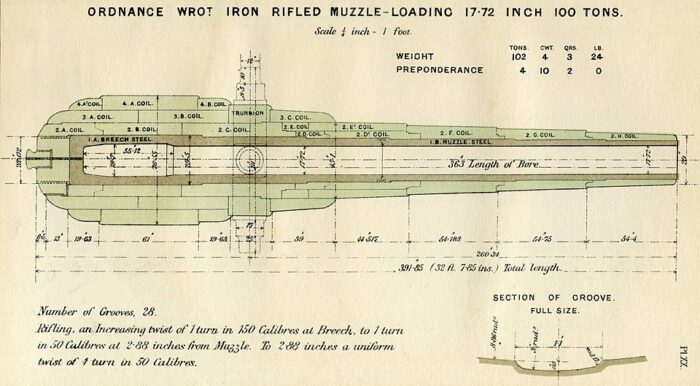
The centerpiece of the design were their enormous Armstrong 100-ton guns. The completion main battery comprised four 450 mm (17.7 in) 100-ton guns, 20-caliber, mounted in two turrets placed en echelon amidships. They fired a 1,905-pound (864 kg) shell at a muzzle velocity of 1,490 to 1,670 feet per second (450 to 510 m/s) (2 propellant charges). Rate of fire was limited to a shot every 15 minutes given the complicated roloading process. The muzzle-loaded guns needed to be depressed enough in order for a system of pushrods emerging from the bridge to clean the guns, push the powder charges down the barrel, then push the shell, all at an angle. The guns were then elevated and the turret traverse to the correct bearing, which all needed time. In a combat at sea, this was problematic. The placmentd en echelon amidships was repeated later on follow-up designs.
Secondary Guns
As completed, there were none, however given the slow rate of fire of these guns, this quickly changed during refits in the 1890s (see below).
Torpedo Tubes
Only complement to the behemoth guns, the ships also carried three 14 in (360 mm) torpedo tubes, each holding a 125 kg (276 lb) warhead with a 600 m (2,000 ft) range. Probably so Whitehead mark I types.
Clio class TB

Duilio was built with a modified stern “hangar” to launch a Clio class TB. The latter was a 26.5 tonnes launch with loco boilers, rather unique at that time. Many warships of the 1890 could carry a steam launch operating a spar torpedo, but the fact this TB could be launched without complicating handling directly from a flooded stern, like modern LHD, was a formidable innovation. On other navies, such steam launches were simply stored on deck and put to see using boom cranes. This “mothership ability” gave an additional “torpedo range” well beyond the range of artillery, to this battleship. The Clio class however was a puny boat, on paper which could also perform reconnaissance missions, but only in calm waters. It also not torpedo tube but instead two small payload spare torpedoes, one on each side. These spars were just a few meters long and the detonation can be fatal to the carrier. There is scarce info about this midget TB, but it seems related to a 1877 project by Thornycroft effectively in service with the Regia Marina.
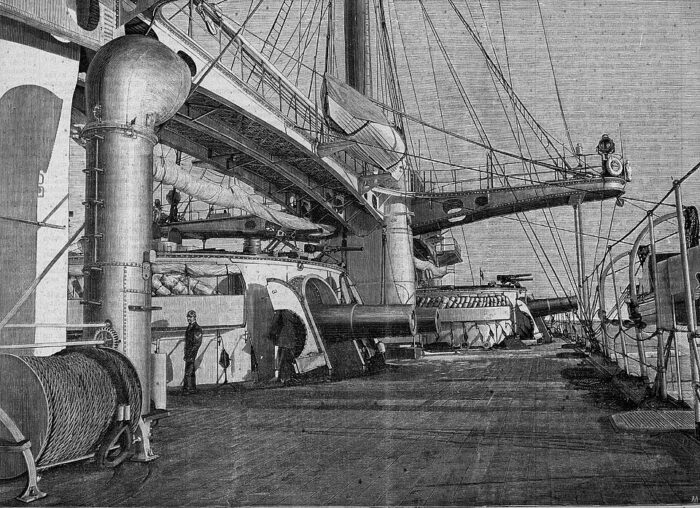
Modifications
In 1890, Caio Duilio received three 4.7 in (120 mm) 40-caliber guns, each firing a 36 lb (16 kg) shell at 2,854 ft/s (870 m/s), and in 1900, two 75 mm (3.0 in) guns, eight 57 mm (2.2 in) Nordenfelt 40-caliber quick-firing guns, and four 37 mm (1.5 in) 20-caliber revolver cannon were also added to deal with TBs.
Enrico Dandolo was rebuilt later, in 1895–1898, and received four 10 in (250 mm) 40-caliber QF guns as main armament. They fired a 494.3 lb (224.2 kg) armour-piercing shell at 2,460 ft/s (750 m/s). The Secondary battery consisted of five 4.7 in (120 mm) 40-caliber guns, sixteen 57 mm (2.2 in) QF guns, eight 37 mm (1.5 in) Hotchkiss revolver cannon, and four machine guns.
Duilio class Ironclads specifics |
|
| Displacement | 10,962 long tons (11,138 t), 12,071 t FL |
| Dimensions | Length 109.16 x 19.74 x 8.31 m (358 ft 2 in x 64 ft 9 in x 27 ft 3 in) |
| Propulsion | 1 shaft, 2 compound steam engines, 8 boilers, 7,700 hp, |
| Speed | 15.04 knots (27.85 km/h; 17.31 mph) |
| Range | 3,760 nmi (6,960 km) at 10 kn (19 km/h; 12 mph) |
| Armor | Belt armor: 21.5 in (550 mm), Turrets: 17 in (430 mm), Deck: 1.2 to 2 in (30 to 51 mm) |
| Armament | 2×2 450 mm, 3 × 14 in (360 mm) TT. |
| Crew | 420 |
 Caio Duilio (1876)
Caio Duilio (1876)
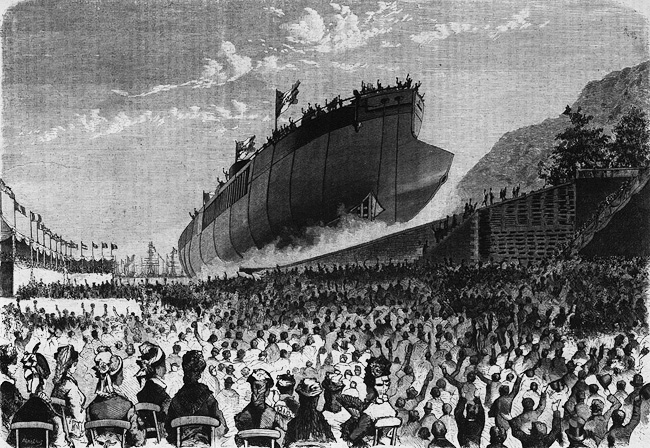
The battleship Caio Duilio never saw battle. These were the years of the Belle Époque, and the European powers were experiencing a long period of peace, amid mounting tensions that would only explode in 1914. On March 6, 1880, shortly after entering service, one of the main guns was mistakenly double-loaded, a possibility given the laborious and uncertain muzzle-loading method, causing the barrel to explode.
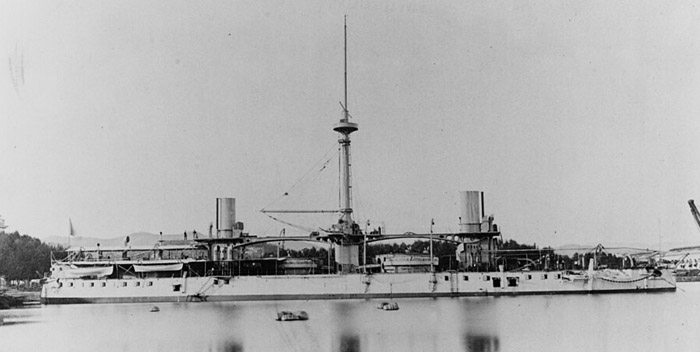
The battleship’s service was entirely in the Mediterranean, where she also undertook visiting cruises to coastal countries and was occasionally sent to the Eastern Mediterranean when times of tension or the defense of national interests required it. Aside from her undoubted deterrent power against France, the Caio Duilio’s powerful presence at sea was virtually unused politically. Given Italy’s political and economic situation at the time, which was unable, or unwilling, to develop a foreign policy of power, even though it was envisioned—the Italian government, in those years, refused the British invitation to participate in the occupation of the Suez Canal—this did not actually shift the naval balance of power in the Mediterranean.
Unlike the Enrico Dandolo, which was refitted in 1894, the Caio Duilio was not refitted. When she was retired from service in 1900, she served as a training ship for helmsmen and cabin boys, and was subsequently used as a coastal defense battery. The ship, decommissioned on October 20, 1906, was decommissioned on June 27, 1909, and scrapped the same year.
Name: The ship was the first vessel of the Italian Navy named after the Roman consul Gaius Duilius, admiral and hero of the First Punic War.
The model of the Duilius ship, preserved at the Arsenale Historical Exhibition.
The name Caio Duilio was later given to a battleship launched in 1913. After taking part in the First World War, it was rebuilt between 1937 and 1940, participating in this configuration in the Second World War, and joining the Italian Navy at the end of the conflict, serving as a flagship until being decommissioned in 1956.
The name Caio Duilio was later given to a guided-missile cruiser/helicopter carrier that entered service in the 1960s and was decommissioned in 1990, after having been used for the last decade as a training ship for students of the Livorno Naval Academy.
The name Caio Duilio is currently carried by a guided missile destroyer launched in Riva Trigoso on 23 October 2007 and entered into service on 22 September 2011. It is the first ship with this name not to have been built in Castellammare di Stabia.
 Enrico Dandolo (1878)
Enrico Dandolo (1878)
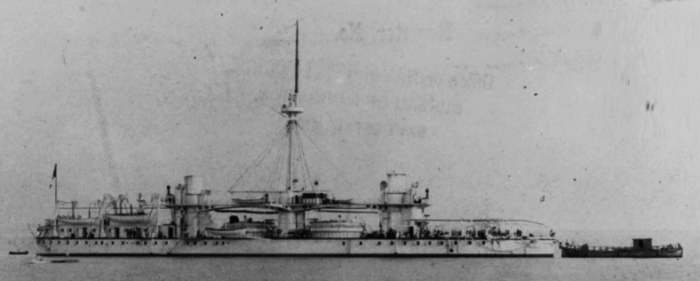
Enrico Dandolo was laid down at
Unlike her lead ship, the Caio Duilio, which underwent no modernization or military service during her operational life, the battleship Enrico Dandolo was modernized in 1894 and mobilized for the Italo-Turkish War of 1911-1912, performing support and local defense duties in the harbors of Augusta and Messina.
During the modernization works of 1894, the mainmast was removed and two masts were added forward and aft of the funnels. The modernization extended to the layout and type of secondary armament; the original turrets were replaced with more modern ones, each armed with two 254 mm breech-loading guns. These smaller, longer-barreled guns fired faster, more penetrating projectiles at greater range and had a faster and safer loading system.
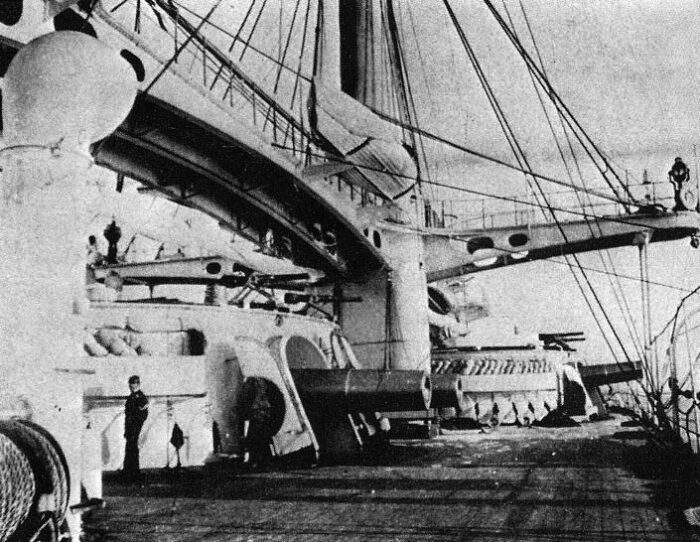
During the First World War, the battleship Enrico Dandolo was deployed to protect the bases of Brindisi and Vlora, where, for a time, it served as flagship of the Commander of the naval forces in Albania. At the end of the war, until October 1919, it served as the headquarters of the Naval High Command in Cattaro, responsible for enforcing the armistice clauses at the former Kriegsmarine base. The battleship Enrico Dandolo was finally decommissioned on July 4, 1920, after nearly four decades of service.
The case of Dandolo
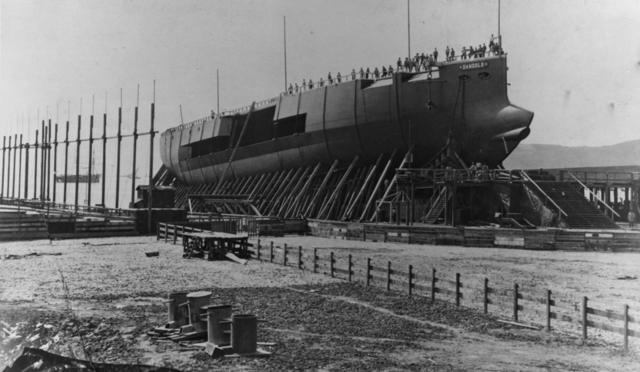
Dandolo was named after the 42nd Doge of Venice. The ship was laid down at La Spezia on 6 January 1873 and launched on 10 July 1878.
Her design was similar to the Duilio, with similar armour, configuration, and power plant made of two vertical compound steam engines each driving a single screw propeller. Its first assignation were the annual fleet manoeuvres of 1885, in which it served as the flagship of the 1st Division, “Western Squadron”, under command of Vice Admiral Martini. This exercise took place off Sardinia with an attacking Sqn. and a defending “Eastern Squadron”, in a Franco-Italian war scenario.
This was followed by the 1888 fleet maneuvers, and the ship was later flagship of the 3rd Division of the Active Squadron for the 1893 exercises. There was a full reconstruction (1895-1898) to a new design under Inspector Engineer Giacinto Pulino supervision.
The major upgrade consisted in the addition of quick-firing 10 in (250 mm) guns (in replacement to the former 450 mm battery), and she received a new secondary battery. A new engine was also fitted, but performances stayed the same. In 1901, Enrico Dandolo joined in the 2nd Division. It was in the Active Squadron in 1902, with Andrea Doria, Francesco Morosini, three Re Umberto-class ironclads, and the new pre-dreadnought Ammiraglio di Saint Bon. In 1905, she was transferred to the Reserve Squadron, and later versed to the Gunnery School as a training ship. In the 1911-12 Italo-Turkish war, She was versed to the 5th Division of the Italian fleet (ironclads Italia and Lepanto) but saw no action. In 1913, she was sent as a guard ship at Tobruk, Libya, and transferred to Brindisi and then Venice during the war. She was eventually stricken on 23 January 1920 and later sold for scrap.
Caio Duilio’s career was uneventful, spending her first two decades with the Active and Reserve Squadrons, in charge of training manoeuvres and exercises. The Ironclad was withdrawn in 1902 and only employed later as a training ship, until 1909. At that time, she was converted into a floating oil tank, renamed GM40. Its ultimate fate is unknown.
Links/Src
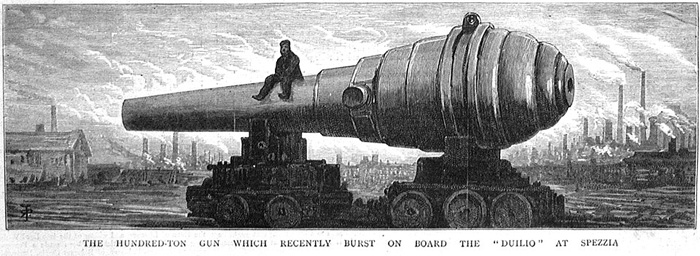
Books
Specs Conway’s all the world fighting ships 1860-1905.
Links
https://www.navypedia.org/ships/italy/it_bb_duilio80.htm
Duilio class on Wikipedia
About the Caio Duilio
About Benedetto Brin
https://it.wikipedia.org/wiki/Enrico_Dandolo_(nave_da_battaglia)
https://it.wikipedia.org/wiki/Caio_Duilio_(nave_da_battaglia_1876)
https://commons.wikimedia.org/wiki/Category:Caio_Duilio_class_battleship_(1876)

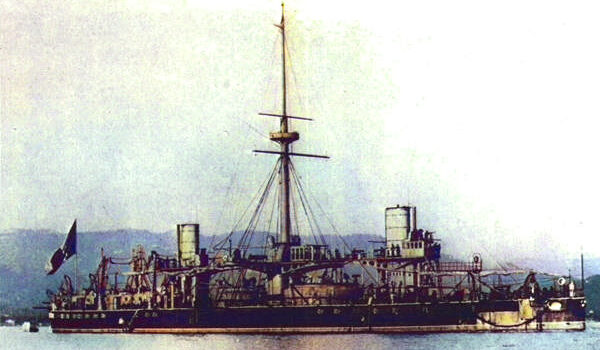

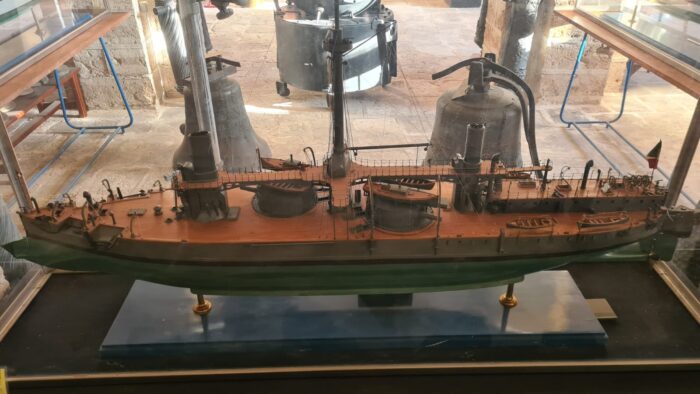
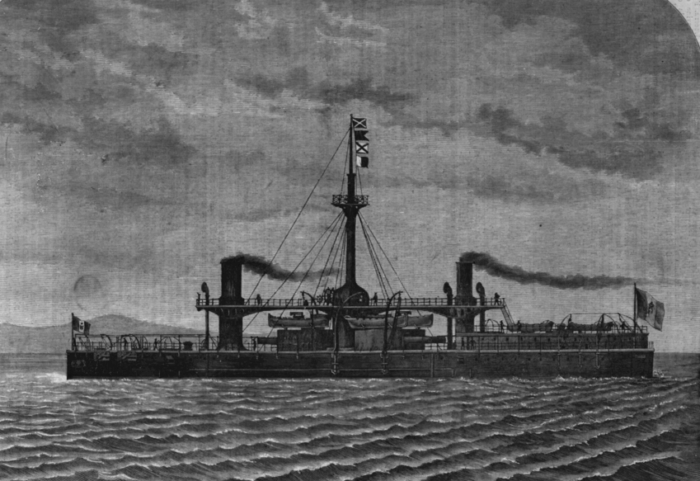
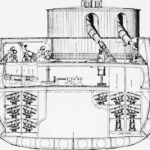
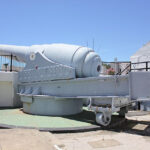
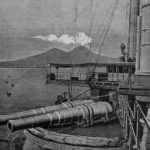
 Latest Facebook Entry -
Latest Facebook Entry -  X(Tweeter) Naval Encyclopedia's deck archive
X(Tweeter) Naval Encyclopedia's deck archive Instagram (@navalencyc)
Instagram (@navalencyc)


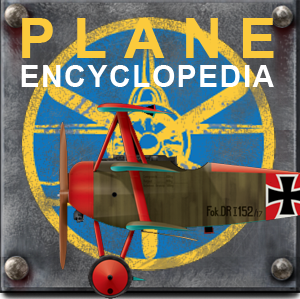

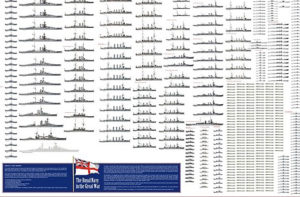
 French Navy
French Navy Royal Navy
Royal Navy Russian Navy
Russian Navy Armada Espanola
Armada Espanola Austrian Navy
Austrian Navy K.u.K. Kriegsmarine
K.u.K. Kriegsmarine Dansk Marine
Dansk Marine Nautiko Hellenon
Nautiko Hellenon Koninklije Marine 1870
Koninklije Marine 1870 Marinha do Brasil
Marinha do Brasil Osmanlı Donanması
Osmanlı Donanması Marina Do Peru
Marina Do Peru Marinha do Portugal
Marinha do Portugal Regia Marina 1870
Regia Marina 1870 Nihhon Kaigun 1870
Nihhon Kaigun 1870 Preußische Marine 1870
Preußische Marine 1870 Russkiy Flot 1870
Russkiy Flot 1870 Svenska marinen
Svenska marinen Søværnet
Søværnet Union Navy
Union Navy Confederate Navy
Confederate Navy Armada de Argentina
Armada de Argentina Imperial Chinese Navy
Imperial Chinese Navy Marinha do Portugal
Marinha do Portugal Mexico
Mexico Kaiserliche Marine
Kaiserliche Marine 1898 US Navy
1898 US Navy Sovietskiy Flot
Sovietskiy Flot Royal Canadian Navy
Royal Canadian Navy Royal Australian Navy
Royal Australian Navy RNZN Fleet
RNZN Fleet Chinese Navy 1937
Chinese Navy 1937 Kriegsmarine
Kriegsmarine Chilean Navy
Chilean Navy Danish Navy
Danish Navy Finnish Navy
Finnish Navy Hellenic Navy
Hellenic Navy Polish Navy
Polish Navy Romanian Navy
Romanian Navy Turkish Navy
Turkish Navy Royal Yugoslav Navy
Royal Yugoslav Navy Royal Thai Navy
Royal Thai Navy Minor Navies
Minor Navies Albania
Albania Austria
Austria Belgium
Belgium Columbia
Columbia Costa Rica
Costa Rica Cuba
Cuba Czechoslovakia
Czechoslovakia Dominican Republic
Dominican Republic Haiti
Haiti Hungary
Hungary Honduras
Honduras Estonia
Estonia Iceland
Iceland Eire
Eire Equador
Equador Iran
Iran Iraq
Iraq Latvia
Latvia Liberia
Liberia Lithuania
Lithuania Mandchukuo
Mandchukuo Morocco
Morocco Nicaragua
Nicaragua Persia
Persia San Salvador
San Salvador Sarawak
Sarawak Uruguay
Uruguay Venezuela
Venezuela Zanzibar
Zanzibar Warsaw Pact Navies
Warsaw Pact Navies Bulgaria
Bulgaria Hungary
Hungary

 Bundesmarine
Bundesmarine Dutch Navy
Dutch Navy Hellenic Navy
Hellenic Navy Marina Militare
Marina Militare Yugoslav Navy
Yugoslav Navy Chinese Navy
Chinese Navy Indian Navy
Indian Navy Indonesian Navy
Indonesian Navy JMSDF
JMSDF North Korean Navy
North Korean Navy Pakistani Navy
Pakistani Navy Philippines Navy
Philippines Navy ROKN
ROKN Rep. of Singapore Navy
Rep. of Singapore Navy Taiwanese Navy
Taiwanese Navy IDF Navy
IDF Navy Saudi Navy
Saudi Navy Royal New Zealand Navy
Royal New Zealand Navy Egyptian Navy
Egyptian Navy South African Navy
South African Navy






























 Ukrainian Navy
Ukrainian Navy dbodesign
dbodesign